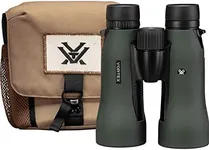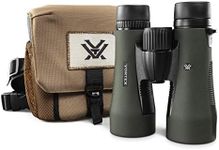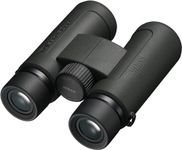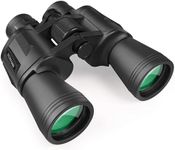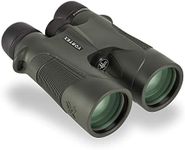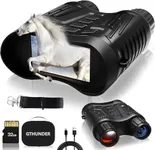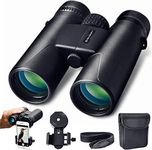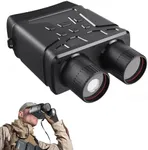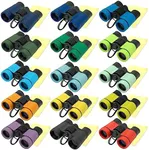Buying Guide for the Best Military Grade Binoculars
Choosing the right military-grade binoculars can be a daunting task, but with the right knowledge, you can find the perfect pair to suit your needs. Military-grade binoculars are designed for durability, precision, and performance in various conditions. When selecting a pair, it's important to consider several key specifications to ensure they meet your requirements. Here are the most important specs to look at and how to navigate them.MagnificationMagnification refers to how much closer an object appears when viewed through the binoculars. This is important because it determines how much detail you can see from a distance. Binoculars typically have magnification values like 8x, 10x, or 12x. Lower magnification (e.g., 8x) provides a wider field of view and is easier to stabilize, making it suitable for general use and moving targets. Higher magnification (e.g., 12x) offers more detail but can be harder to keep steady and may require a tripod. Choose a magnification based on your need for detail versus ease of use.
Objective Lens DiameterThe objective lens diameter, measured in millimeters, indicates the size of the front lenses. This spec is crucial because it affects the amount of light that enters the binoculars, impacting image brightness and clarity. Larger diameters (e.g., 50mm) allow more light, making them better for low-light conditions but also heavier. Smaller diameters (e.g., 30mm) are more compact and lighter but may not perform as well in dim lighting. Consider where and when you'll be using the binoculars to determine the right balance between size and light-gathering ability.
Field of ViewField of view (FOV) is the width of the area visible through the binoculars at a specific distance, usually measured in feet at 1,000 yards. A wider FOV is beneficial for tracking moving objects and scanning large areas. Binoculars with a narrow FOV provide more detail but cover less area. If you need to observe fast-moving subjects or scan wide landscapes, opt for a wider FOV. For detailed observation of stationary objects, a narrower FOV may be sufficient.
Prism TypeBinoculars use prisms to correct the orientation of the image. The two main types are Porro prisms and roof prisms. Porro prism binoculars are generally bulkier but offer better depth perception and a wider field of view. Roof prism binoculars are more compact and durable but can be more expensive. Choose Porro prisms for better image quality and depth, and roof prisms for portability and ruggedness.
CoatingsLens coatings enhance light transmission, reduce glare, and improve image quality. Coatings can be single-layer or multi-layer, with multi-layer coatings providing the best performance. Fully multi-coated lenses offer the highest light transmission and clarity, which is crucial for low-light conditions and achieving the best possible image. If you need the best image quality, especially in challenging lighting, opt for fully multi-coated lenses.
Durability and WaterproofingMilitary-grade binoculars need to withstand harsh conditions, so durability and waterproofing are essential. Look for binoculars with rugged construction, often indicated by terms like 'shockproof' or 'rubber-armored.' Waterproof and fog-proof features, usually achieved through O-ring seals and nitrogen purging, ensure the binoculars perform well in wet and humid environments. If you expect to use the binoculars in tough conditions, prioritize these features to ensure longevity and reliability.
Weight and SizeThe weight and size of binoculars affect portability and ease of use. Heavier binoculars can be more stable but may cause fatigue during extended use. Lighter, more compact models are easier to carry and handle but may compromise on some features like larger objective lenses. Consider how long you'll be using the binoculars and whether you'll be carrying them over long distances to find the right balance between weight and functionality.
